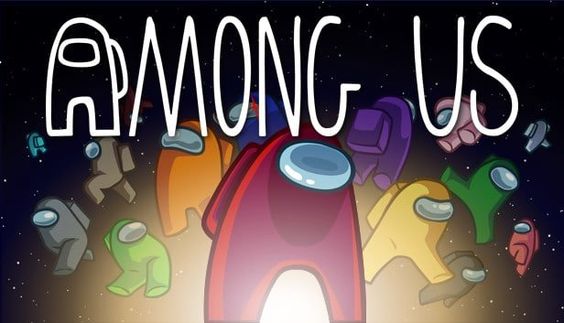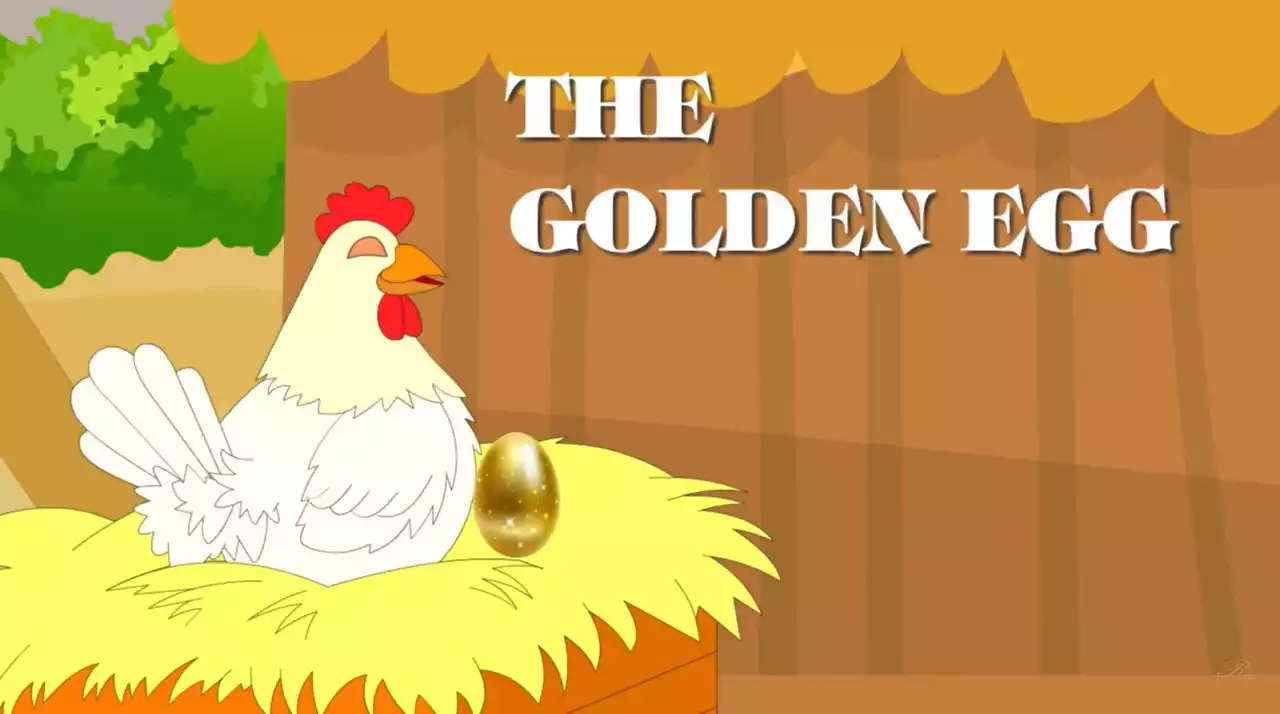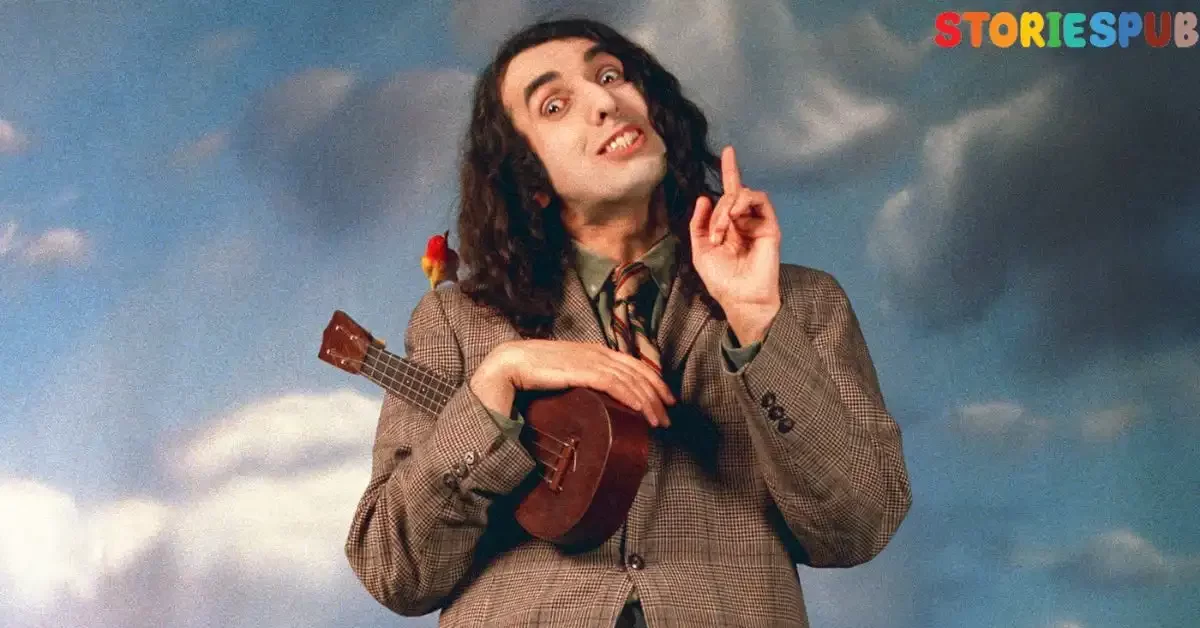
In the early 20th century, as the world underwent transformative changes, a visionary duo emerged to reshape the landscape of entertainment. Walt Disney and Roy O. Disney, two brothers with a shared dream, embarked on a journey that would forever alter the course of animation, film, and theme park industries. Their brainchild, the Walt Disney Company, stands today as a monumental force in the world of entertainment, enchanting audiences of all ages.
At its heart, the Walt Disney Company is not just a corporation; it’s a storyteller, an innovator, and a symbol of creative genius. The story of Disney’s inception is a tale of unwavering determination and artistic brilliance. This introduction sets the stage for a remarkable journey through time, where we will traverse the company’s profound significance and its indelible impact on global culture.
The Walt Disney Company’s influence reaches far beyond the confines of its corporate structure. It’s a name synonymous with magic, wonder, and imagination. From the birth of iconic characters like Mickey Mouse to the creation of immersive theme parks and groundbreaking technological advancements, Disney’s journey has left an indomitable mark on the world of entertainment. It has enchanted us with animated classics, transported us to enchanting worlds, and instilled in us a sense of childlike wonder.
As we delve into the history, innovations, controversies, and philanthropy of the Walt Disney Company, we will unravel the layers of its narrative. We will witness the evolution of an entertainment empire and explore its role in shaping not just the entertainment industry, but also our collective dreams and aspirations.
Join us on this captivating journey through the legacy of the Walt Disney Company, where storytelling, creativity, and magic converge to create a truly enchanting experience.
Personal information related to the Walt Disney Company
| Founder(s) | Walt Disney and Roy O. Disney |
| Founded | 16-Oct-23 |
| Headquarters | Burbank, California, USA |
| Key Figures | Bob Chapek (CEO), Alan Horn (Chairman) |
| Notable Creations | Mickey Mouse, Snow White, Disney Princesses |
| Theme Parks | Disneyland, Walt Disney World, and more |
| Corporate Social Responsibility | Disney Conservation Fund, Disney VoluntEARS, Disney Aspire |
| Subsidiaries | Pixar, Marvel, Lucasfilm, 21st Century Fox, ESPN, and more |
| Streaming Platform | Disney+ |
| Legacy | Unparalleled influence on the entertainment industry and pop culture |
Founding and Early Years
The Walt Disney Company’s origin story is a testament to the unwavering vision and creativity of its founders, Walt Disney and Roy O. Disney. In this section, we will embark on a journey through the early years of the company, exploring the roots of this entertainment empire.
Walt Disney, the creative genius behind the Disney brand, possessed a unique ability to weave enchanting stories and bring them to life through animation. His relentless pursuit of excellence in animation and storytelling laid the foundation for the company’s future success. With the unyielding support of his brother, Roy O. Disney, the Disney brothers embarked on a creative adventure that would forever change the world of entertainment.
The Disney Brothers Cartoon Studio, later known as the Walt Disney Company, was established to explore the burgeoning world of animation. In these early years, the company created iconic characters such as Mickey Mouse, who quickly became a beloved symbol of American pop culture.
The success of the company’s animated shorts, starting with “Steamboat Willie,” introduced audiences to a new form of entertainment and set a high standard for animation that would be upheld for generations.
However, the early years were not without their challenges. The Disney brothers encountered financial difficulties and faced obstacles in securing distribution for their creations.
Yet, it was in the face of these challenges that their innovative spirit shone brightest. Walt Disney’s commitment to technological advancements and storytelling excellence led to groundbreaking achievements, such as the introduction of the first synchronized sound cartoon, “Steamboat Willie.”
As we delve into this fascinating period, we will uncover the pioneering spirit that defined the Walt Disney Company’s early years. We will explore the innovative milestones that paved the way for the company’s enduring legacy, from the creation of animation classics to the establishment of a new form of entertainment. Join us as we journey through the formative years of the Walt Disney Company and witness the birth of an entertainment powerhouse.
Expansion and Iconic Creations
The Walt Disney Company’s expansion and the creation of iconic masterpieces defined an era of unprecedented growth and innovation in the world of entertainment. In this section, we will explore the company’s expansion into various entertainment sectors, the key milestones it achieved, and its enduring impact on animation and storytelling.
As the 1930s unfolded, the Disney Company’s creative vision extended beyond the realm of animation. Walt Disney recognized the potential of diversification and began exploring avenues in music, merchandise, and theme park ventures. This diversification laid the groundwork for the company’s future success and helped establish Disney as a multimedia conglomerate.
One of the most significant milestones during this period was the creation of Mickey Mouse. Mickey, introduced in the short film “Steamboat Willie” in 1928, became an overnight sensation and is now one of the most recognizable and beloved characters in the world. The success of Mickey Mouse set the stage for the development of other iconic characters, like Minnie Mouse, Goofy, and Pluto, expanding the Disney universe.
However, the pinnacle of Disney’s achievement in this era was the release of “Snow White and the Seven Dwarfs” in 1937. This groundbreaking animated feature film was the first of its kind and marked a turning point in the history of animation.
It showcased Disney’s commitment to storytelling, character development, and the artistic capabilities of animation. The film’s success solidified Disney’s reputation as a leader in animation and opened doors to a new era of feature-length animated films.
The impact of the Disney Company on animation and storytelling during these years cannot be overstated. Its creations set the standard for animation quality and storytelling excellence. With the release of each new film, Disney continued to raise the bar, captivating audiences with timeless classics that remain beloved by generations.
Join us as we journey through this remarkable period of expansion, creativity, and innovation in the Walt Disney Company’s history. We will explore how the company’s diversification and iconic creations paved the way for its enduring legacy and solidified its place in the annals of entertainment history.
Theme Parks and Beyond
The expansion of the Walt Disney Company went far beyond animation and encompassed the creation of iconic theme parks, a global presence in the entertainment industry, and ventures into live-action films and media networks. In this section, we will delve into these aspects and explore how they shaped Disney’s evolution.
Walt Disney’s dream of bringing his imaginative worlds to life took a tangible form with the opening of Disneyland in 1955. Located in Anaheim, California, Disneyland was the world’s first-ever theme park. It introduced the concept of an amusement park that combined storytelling, fantasy, and immersive experiences.
Visitors could step into the enchanting worlds of Disney’s animated films, interact with beloved characters, and enjoy a wide array of rides and attractions. Disneyland’s success inspired a new era of theme parks worldwide.
Disneyland’s triumph led to the creation of additional theme parks, including Walt Disney World Resort in Florida, Tokyo Disney Resort, Disneyland Paris, Hong Kong Disneyland, and Shanghai Disney Resort. Each park offers a unique blend of Disney magic while embracing the local culture and environment. The global expansion of Disney theme parks allowed people from different corners of the world to experience the enchantment and joy Disney had to offer.
In addition to theme parks, the Disney Company extended its reach into live-action films and media networks. Live-action adaptations of classic animated films, such as “Alice in Wonderland” and “Beauty and the Beast,” garnered immense success, combining nostalgia with contemporary storytelling.
The acquisition of major entertainment companies like Pixar, Marvel, and Lucasfilm allowed Disney to expand its film portfolio even further, leading to blockbuster franchises like the Marvel Cinematic Universe and Star Wars.
The company also ventured into media networks, owning ABC, ESPN, and other cable channels. Disney’s reach extended beyond movies and theme parks to television, sports, and digital streaming platforms like Disney+.
The Walt Disney Company’s influence on the global entertainment industry is unparalleled, and its ability to create immersive experiences and storytelling magic continues to captivate audiences of all ages. Join us as we explore the journey of Disneyland’s inception, the global expansion of Disney theme parks, and Disney’s foray into live-action films and media networks. These developments illustrate how the company’s legacy is deeply intertwined with our collective cultural experience.
Philanthropy and Corporate Responsibility
The Walt Disney Company is not only a powerhouse in the entertainment industry but also a dedicated advocate for philanthropy and corporate responsibility. In this section, we will explore Disney’s commitment to social responsibility and its impact on various aspects of society and the environment.
Disney has always believed in the importance of giving back to the community. The company’s philanthropic efforts extend to various causes, with a significant focus on education.
Through the Disney Learning Partnership, they have invested in educational programs aimed at inspiring young minds and fostering creativity. The Disney Youth Education Series (YES) provides hands-on educational experiences at Disney’s theme parks, utilizing the magic of Disney to make learning fun and engaging.
In the realm of conservation, the Disney Conservation Fund has been at the forefront of supporting wildlife and the environment. The fund provides grants to numerous organizations dedicated to protecting wildlife and preserving habitats. Disney’s commitment to conservation extends beyond financial support, as the company works actively to reduce its environmental footprint and promote sustainable practices across its operations.
Furthermore, Disney’s dedication to community engagement is evident through various programs, including Disney VoluntEARS. This initiative encourages Disney employees to engage in volunteer activities and make a positive impact in their communities. It’s a reflection of the company’s belief in contributing to the well-being of local neighborhoods and regions.
One of the most iconic contributions Disney has made to children’s welfare is through their beloved characters and stories. Disney has a special place in the hearts of children worldwide, and their characters serve as positive role models, instilling values of kindness, bravery, and the importance of believing in oneself.
Through partnerships with organizations like Make-A-Wish Foundation, Disney has fulfilled countless dreams of children facing critical illnesses, bringing a ray of happiness into their lives.
Disney’s efforts are not limited to education, conservation, community engagement, or children’s welfare alone. The company has also been actively involved in various global environmental efforts, including reducing greenhouse gas emissions, water conservation, and waste reduction. Disney’s environmental commitment is an integral part of its corporate responsibility, aiming to create a more sustainable and greener world.
The Walt Disney Company’s dedication to philanthropy and corporate responsibility extends far and wide, touching the lives of individuals, communities, and the environment. Their commitment to education, conservation, community engagement, children’s welfare, and global environmental efforts reflects their mission to make the world a better place for future generations.
Leadership and the Disney Legacy
The Walt Disney Company has witnessed a series of influential leaders who have each contributed to the company’s success and legacy. In this section, we’ll delve into the profiles of some of these prominent leaders, discuss succession planning, and explore how different leaders have shaped Disney’s trajectory.
Walt Disney
- The visionary founder, Walt Disney, was the creative force behind the company’s early successes. His imagination and innovation brought beloved characters like Mickey Mouse to life and revolutionized the animation industry.
- Under Walt’s leadership, Disney introduced the concept of feature-length animated films with “Snow White and the Seven Dwarfs” in 1937, setting new standards for storytelling in animation.
Roy O. Disney
- Roy O. Disney, Walt’s older brother, played a crucial role as the financial and administrative brain behind the company. His efforts ensured the stability and growth of Disney during its formative years.
- Roy’s determination and financial acumen were instrumental in the construction of Disneyland, a groundbreaking venture in the theme park industry.
Michael Eisner
- Michael Eisner served as Disney’s CEO from 1984 to 2005. He led the company through a period of expansion and diversification. Eisner’s tenure saw the acquisition of other major entertainment companies, including Pixar, Miramax, and ABC.
- Under Eisner’s leadership, Disney experienced a renaissance in animation with hits like “The Little Mermaid,” “Beauty and the Beast,” and “The Lion King.”
Bob Iger
- Bob Iger, who succeeded Eisner as CEO, played a key role in transforming Disney into a global entertainment conglomerate. During his tenure, Disney acquired major entities, such as Marvel, Lucasfilm, and 21st Century Fox.
- Iger’s leadership was marked by Disney’s expansion into streaming with the launch of Disney+ in 2019, a move that would revolutionize the entertainment industry.
Bob Chapek
- Bob Chapek succeeded Bob Iger as CEO in 2020. He has faced unique challenges, including navigating the company through the COVID-19 pandemic and continuing Disney’s streaming dominance.
- Chapek’s leadership has emphasized a more direct-to-consumer approach, recognizing the changing landscape of media consumption.
Succession planning at Disney has historically been a carefully orchestrated process. The company has shown a remarkable ability to transition from one leader to another seamlessly. These transitions have been significant moments in Disney’s history, often marking shifts in strategy, priorities, and company culture.
Different leaders have left their distinctive imprints on Disney’s trajectory. Walt Disney’s creativity and pioneering spirit laid the foundation for the company. Roy O. Disney’s financial stewardship ensured its stability.
Eisner’s expansion and Iger’s acquisitions and pivot to streaming transformed it into a global powerhouse. Chapek continues to navigate Disney’s role in the evolving entertainment landscape. Each leader has contributed to Disney’s enduring legacy, making it the entertainment giant we know today.
Global Impact and Technological Advancements
The Walt Disney Company’s global impact and technological advancements have played a pivotal role in shaping the entertainment industry and adapting to the ever-changing digital landscape. In this section, we will explore Disney’s international presence, technological innovations, and its ability to remain at the forefront of the digital age.
Global Reach and Influence
- Disney’s global presence is undeniable. With a rich history of storytelling and beloved characters, the company’s influence extends to all corners of the world. Disney’s animated films have been cherished in diverse cultures and languages.
- The establishment of Disney theme parks and resorts worldwide, including locations in the United States, Europe, Asia, and beyond, has made Disney a truly international brand.
Technological Advancements
- Disney has been at the forefront of animation technology for decades. From the innovation of the multiplane camera in the production of “Snow White and the Seven Dwarfs” to the use of computer-generated imagery (CGI) in films like “Toy Story,” Disney has consistently pushed the boundaries of animation.
- The launch of Disney’s streaming service, Disney+, in 2019 marked a significant shift in the company’s approach to content delivery. Disney+ has become a major player in the streaming industry, offering a vast library of classic and original content.
Adaptation to the Digital Age
- Disney’s acquisition of Pixar Animation Studios in 2006 brought technological expertise in computer animation to the company. This move led to a new era of animated classics and the integration of CGI into traditional animation.
- With the rise of digital media and changing consumer habits, Disney adapted by launching Disney+, offering its vast content library through streaming. The service has rapidly gained subscribers, demonstrating Disney’s ability to stay relevant in the digital age.
The Walt Disney Company’s ability to maintain its iconic status and relevance on the global stage is a testament to its adaptability and commitment to technological advancements. From classic hand-drawn animation to state-of-the-art CGI, Disney has consistently embraced innovation. The expansion into the streaming market is a prime example of how Disney continues to meet the demands of modern audiences.
As the entertainment landscape continues to evolve, Disney’s legacy of storytelling, technological innovation, and international influence ensures its enduring impact on the world of entertainment.
Challenges and Controversies
The Walt Disney Company, despite its enormous success and global influence, has not been immune to challenges and controversies. In this section, we will delve into the various issues that Disney has faced, how it has navigated through them, and the lessons learned.
Market Competition and Industry Challenges
- Disney operates in a highly competitive industry, contending with major studios, streaming platforms, and evolving viewer preferences. The emergence of streaming giants like Netflix and Amazon Prime has altered the media landscape, increasing competition for content and viewership.
- In response, Disney has focused on content diversification and expanding its streaming presence with Disney+. By acquiring major franchises like Marvel, Star Wars, and 20th Century Fox, Disney aims to remain competitive and relevant in a rapidly changing market.
Controversies and Ethical Concerns
- Disney’s content, especially its early animated films, has faced scrutiny for perpetuating certain stereotypes and promoting gender roles that are considered outdated or inappropriate by today’s standards. The company has had to address the issues of racial and gender representation in its classic films.
- Controversies have also arisen regarding labor practices and workers’ rights in Disney’s theme parks and overseas manufacturing. Some critics have raised concerns about the wages and working conditions of Disney employees.
Responses and Lessons
- Disney has responded to controversies by taking a more proactive approach. In the case of problematic content, the company has added disclaimers and context to its older films, acknowledging the historical insensitivity.
- Regarding labor practices, Disney has made efforts to improve working conditions for its employees and address concerns about fair wages and workers’ rights.
The Walt Disney Company’s ability to address challenges and controversies reflects its commitment to adapting and evolving. The lessons learned include the importance of being responsive to societal changes, maintaining ethical business practices, and staying innovative in a competitive market.
Disney’s enduring presence in the entertainment industry stems not only from its creative storytelling but also from its capacity to learn from past issues, adapt to a changing world, and set high standards for content and ethics. As it continues to face new challenges, the company’s ability to respond will determine its success and lasting legacy.
Documenting the Disney Legacy
Documenting the legacy of The Walt Disney Company involves delving into historical records, writings, and primary sources, as well as highlighting significant events, key achievements, and notable figures associated with the company. It also involves the preservation and study of artifacts that are integral to Disney’s rich history.
Insights from Historical Records and Primary Sources
- Disney’s legacy is supported by a vast treasure trove of historical records and primary sources. These include Walt Disney’s personal letters, diaries, and corporate documents that shed light on the company’s early struggles and successes.
- Interviews with past and present Disney employees, animators, and creative minds provide invaluable insights into the company’s culture, innovative spirit, and creative processes.
Significant Events and Key Achievements
- Disney’s history is marked by numerous milestones and groundbreaking achievements. The release of “Snow White and the Seven Dwarfs” in 1937, the first full-length animated feature, revolutionized animation and filmmaking.
- Disneyland’s opening in 1955 was a transformative moment in the theme park industry. It set the standard for immersive entertainment experiences.
The acquisition of Pixar Animation Studios in 2006 and Lucasfilm in 2012 expanded Disney’s creative universe and led to the creation of iconic franchises like “Toy Story” and “Star Wars.”
Preservation and Study of Artifacts
- Artifacts related to Disney’s history are carefully preserved, and some are displayed in museums and exhibitions. These artifacts include original animation cells, concept art, and even Walt Disney’s personal items.
- The Walt Disney Archives, established in 1970, is a vital resource for preserving the company’s legacy. It houses an extensive collection of documents, props, and memorabilia that offer insights into Disney’s history.
The study of these artifacts and sources provides a comprehensive understanding of Disney’s legacy, from its humble beginnings to its global influence. It showcases how the company’s commitment to storytelling, innovation, and creative excellence has left an indelible mark on the world of entertainment.
Documenting the Disney legacy is not only a testament to the company’s enduring impact but also an inspiration for future storytellers, artists, and visionaries to continue the legacy of innovation and imagination that Walt Disney himself instilled in the company’s DNA.
Disney in the Modern Age
In the modern age, The Walt Disney Company has demonstrated remarkable adaptability to the challenges and opportunities of the 21st century. It has evolved into a multi-faceted entertainment powerhouse, influencing various industries while maintaining its position as a beloved and iconic brand.
Adaptation to 21st-Century Challenges
- Streaming and Digital Content: Disney has been at the forefront of the streaming revolution with the launch of Disney+ in 2019. The service quickly gained millions of subscribers, offering a vast library of content, including classics, Marvel, Star Wars, and original productions.
- Acquisitions: Disney’s acquisition of major companies like 21st Century Fox and the expansion of its media networks have positioned it as a global leader in entertainment.
- Technological Advancements: The company continually invests in technology, from advanced animation techniques to immersive theme park experiences. Disney Research has been instrumental in pushing boundaries.
Role in Contemporary Entertainment and Media
- Media Networks: Disney’s media networks, including ABC, ESPN, and National Geographic, maintain a substantial presence in broadcasting, sports, and documentary programming.
- Franchise Building: Disney’s franchise approach, exemplified by the Marvel Cinematic Universe and Star Wars, has redefined how major film franchises are managed, keeping audiences engaged for years.
- Themed Entertainment: Disney’s theme parks and resorts, known for their immersive experiences, have expanded to new locations worldwide, ensuring a continued presence in the travel and tourism industry.
Relevance and Influence
- Global Brand: Disney remains a global brand recognized and loved by people of all ages, making it a driving force in merchandising, licensing, and consumer products.
- Cultural Impact: Its impact on popular culture, from characters like Mickey Mouse to iconic songs, is immeasurable. Disney continues to produce culturally significant and socially relevant content.
- Education and Innovation: The company’s commitment to education, including the Disney Conservation Fund, and innovative technologies like Disney Imagineering, ensure it plays a part in shaping the future.
The Walt Disney Company’s ability to adapt to a rapidly changing media landscape, create blockbuster franchises, and maintain cultural relevance has solidified its status as a 21st-century entertainment giant. As it continues to expand and innovate, Disney’s legacy remains firmly established as an enduring symbol of creativity, storytelling, and imagination.
Conclusion
The Walt Disney Company stands as a towering beacon of imagination and entertainment in the annals of history. From its humble beginnings as a fledgling animation studio in the early 20th century, Disney has grown into an unrivaled global force, shaping the very fabric of modern entertainment, culture, and commerce.
In the course of its extraordinary journey, Disney’s founders, visionaries like Walt Disney and Roy O. Disney, dared to dream. They wove enchanting stories and created beloved characters, among them the iconic Mickey Mouse. Their vision extended beyond mere entertainment; it was a legacy of innovation and storytelling magic that captivated audiences across generations.
Through the decades, Disney has continually redefined the landscape of entertainment, pioneering animation techniques and expanding into new realms. With the creation of Disneyland, Disney reimagined theme parks, crafting immersive experiences and childhood memories. The acquisition of Marvel, Star Wars, and Pixar reshaped the film industry, forming expansive cinematic universes.
Disney’s commitment to corporate social responsibility and philanthropy, spanning areas from education to conservation, has exemplified its dedication to making the world a better place. Their contributions to society reach far beyond entertainment, impacting communities and the environment.
In the modern age, Disney has navigated the challenges of digital content, emerging as a leader with Disney+, a streaming platform boasting a treasury of content. Through theme parks, media networks, and franchises, the company continues to capture hearts worldwide, affirming its indomitable influence on culture and business.
The Walt Disney Company is a testament to the enduring power of storytelling, innovation, and the boundless realm of human imagination. It is a living example of how a dream can manifest as a global legacy, enriching the lives of countless individuals.
The magic that Disney unfailingly imparts serves as a reminder that with creativity, vision, and an unwavering commitment to one’s dreams, the possibilities are limitless, and the story is never truly over.
Suggested Article –























